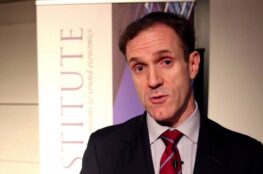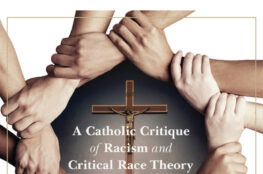During the interwar period on through the advent of World War II, Ukrainian Catholic laity living in Galicia began to take a more active role in the promotion of the Catholic Faith and the rebuilding of Ukrainian social and political structures in an authentically Christian manner. This form of Ukrainian Catholic Action, like its Western relatives, was inspired by Pope Pius XI, and with the same confusing consequences. For unlike his predecessor, St. Pius X, who saw Catholic Action as a lay movement for the restoration of Christian Civilization which is only under the indirect authority of the Church, Pius XI’s understanding appears to contemplate—or was interpreted to contemplate—a more direct dependency of Catholic Action on the Church’s hierarchy. (For a far more detailed discussion of this matter, one should consult Bishop Bernard Tissier de Mallerais’s “Catholic Action Defined.”) As Bohdan Budorowycz discusses in his illuminating article, “The Greek Catholic Church in Galicia, 1914-1944,” 26 Harvard Ukrainian Studies 291 (2002/03), the Ukrainian Catholic Action movement was split between “conservative” groups which remained closely tethered to the supervision of the hierarchy and “liberals” which operated with more independence. While some were skeptical of the formation of Ukrainian Catholic Action groups, “it was argued . . . [that] the members of Catholic Action could contribute to raising the level of spiritual life by assisting local priests in their work, by combating the growing influence of various religious sects, by trying to prevent the alienation of the younger generation from the Church and Church-sponsored organizations, and by generally exerting a constructive influence in public life” (pg. 315).
The survey of Ukrainian Catholic Action groups that Budorowycz provides is as vast and varied as their Western counterparts. However, unlike the Catholic movements in the West, the Ukrainian Catholic movements were noticeably smaller, less organized, and limited in influence. Though enthusiastic, their membership always remained modest. Perhaps, given time, the Ukrainian Catholic movement would have picked up steam, especially given the positive reforms the Ukrainian Church’s leadership had made to both clerical and lay education in Galicia during the early decades of the 20th Century. As we know, those gains were soon eradicated by the violent persecution of the Ukrainian Greek Catholic Church (UGGC) by the Soviet state with the full complicity of the Russian Orthodox Church. Even though the Ukrainian Catholic lay movements collapsed, the Catholic Faith of the Ukrainian people did not. The resurrection of the UGGC, which began in 1989 and is still in process today, is proof of that.
The historic situation of Catholic Action in Ukraine potentially provides some lessons for us today. With Catholic Action all but eradicated in the West following the radical secularization of Europe and the disastrous “fusionism” pursued on this side of the Atlantic, we have to start fresh. Like those brave and loyal Catholics in early 20th C. Ukraine, we lack effective models to look to for inspiration, and our recent history has not been enriched by a vibrant, loyal, and morally serious Catholic engagement with politics and political leaders. And things are only getting worse. With Church prelates informing their faithful not to get too involved in socio-political issues and to look beyond state-sanctioned murder and the denigration of marriage, we might even say that we are in a worse position than those Ukrainian Catholics who were graced with the leadership of saintly hierarchs such as Blessed Bishop Hryhorij Khomysyn, Blessed Bishop Nicholas Charnetsky, and the Servant of God Metropolitan Andrey Sheptytsky.
Still, nothing is preventing us, faithful Catholics of today, from uniting together for common causes in the name of our Savior and King, Jesus Christ, and in union with the principles set forth in the Church’s social magisterium. The teachings of the Catholic Church remain true and in place regardless of whether or not this-or-that priest or bishop wishes to uphold them. The laity cannot derogate from those principles, but it can stay clear of hierarchs who either explicitly or implicitly counsel inaction in the name of maintaining a false peace with the spirit of the times.
If we are to do this, if this is what we wish to accomplish in defiance of false calls for quietism, retreatism, or indifferentism, then of course we must pray. We must pray to St. Pius X—a great champion of Action. So, too, should we pray to the heroic members of the UGCC who sacrificed their lives for Christ, for their spiritual and temporal witness on behalf of the Church shall remain a needful source of inspiration in the face of the struggles to come. How dare any of us—myself especially—look for excuses to remain silent and do nothing when they, and innumerable Christians before them, gave everything for the Faith. No Catholic movement can be successful unless it begins with a movement of the soul, a desire for spiritual union with God, and the strength which the Holy Spirit alone can provide. The Catholics of Ukraine found that strength after centuries of unjust oppression; they are finding it again after enduring unimaginable suffering. If that strength is lost to us in the West, it is lost by choice—a choice for Starbucks and iPhones over the salvation of souls and the triumph of Christ’s Holy Church.



